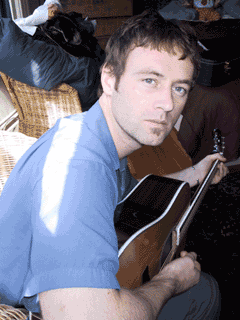Poppy Day
Today is Veterans day in the US or Armistice day elsewhere. When I was really young, 5 years old maybe, my mother, who is a nurse, was a private nurse to a very old Anglo-Irish man, who owned Attyflin House several miles and another world away from our suburban home. A long narrow road wound up to an old manor house which was surrounded by some of the best dairy farming in Europe. The old man's name was Brigadier Hewson, and if memory serves me correctly at the time of his military service he was the highest ranking Irish born officer in the British army. As a little boy he meant little to me, except that I could ramble around his old house, being spoiled by the various house staff, and hang out with a beret headed gardner named Pa - whom my mother told me later was a pretty simple man - which is probably why he got along so well with a 5 year old.
Later on, as my own fascination with WW1 grew my father passed on some of the Brigadiers stories. Dad would go out Attyflin while my mother was nursing and hang out with the Brigadier, whom he held in high regard, just to hear these tales. Apparently Hewson had been wounded on the first day of The Somme, his first of two woundings during the war. He also told my father that war was a terrible thing, but getting old was worse.
Their was another old soldier in my life, albeit for a very short time. My Grandfather, James McDermott, who is a vague black and white memory. He died when I was almost a year old. In my fathers office his Black and Tan war medal is framed and hanging. A guerilla warrior in a dirty, nasty, vicious little war. We know very little about his time in the old IRA, apparently he never discussed it. We do know that he was considered enough of a danger to the new pro treaty Irish government during the Irish Civil war, that he was interned in The Curragh for almost two years. My Father and I keep meaning to research his history, but sometimes I wonder if those days should be left dead and buried.
These two old soldiers came from opposite of the divide in early 20th century Ireland, and it shows how far Ireland has come that they both can be recognised as Irishmen. It would have been interesting to know what Brigadier Hewson thought of my Grandfather's type of soldier, a rag tag guerilla army that brought the empire he fought and bled for to the negotiating table. I wonder what both of them would think of the new shiny brash Ireland of the 21st century.
On a side note - The Face Of Battle by John Keegan is a great book on what battle is like for the men who fight it. It's a down and dirty view of war from the trenches, as opposed to the usual grand sweeping view of great stratagies, clashing empires and visonary leaders. He examines 3 pivotal battles, Agincourt, Waterloo and The Somme and examines what an actual battle was like for soldiers over the ages.
Later on, as my own fascination with WW1 grew my father passed on some of the Brigadiers stories. Dad would go out Attyflin while my mother was nursing and hang out with the Brigadier, whom he held in high regard, just to hear these tales. Apparently Hewson had been wounded on the first day of The Somme, his first of two woundings during the war. He also told my father that war was a terrible thing, but getting old was worse.
Their was another old soldier in my life, albeit for a very short time. My Grandfather, James McDermott, who is a vague black and white memory. He died when I was almost a year old. In my fathers office his Black and Tan war medal is framed and hanging. A guerilla warrior in a dirty, nasty, vicious little war. We know very little about his time in the old IRA, apparently he never discussed it. We do know that he was considered enough of a danger to the new pro treaty Irish government during the Irish Civil war, that he was interned in The Curragh for almost two years. My Father and I keep meaning to research his history, but sometimes I wonder if those days should be left dead and buried.
These two old soldiers came from opposite of the divide in early 20th century Ireland, and it shows how far Ireland has come that they both can be recognised as Irishmen. It would have been interesting to know what Brigadier Hewson thought of my Grandfather's type of soldier, a rag tag guerilla army that brought the empire he fought and bled for to the negotiating table. I wonder what both of them would think of the new shiny brash Ireland of the 21st century.
On a side note - The Face Of Battle by John Keegan is a great book on what battle is like for the men who fight it. It's a down and dirty view of war from the trenches, as opposed to the usual grand sweeping view of great stratagies, clashing empires and visonary leaders. He examines 3 pivotal battles, Agincourt, Waterloo and The Somme and examines what an actual battle was like for soldiers over the ages.


0 Comments:
Post a Comment
Links to this post:
Create a Link
<< Home